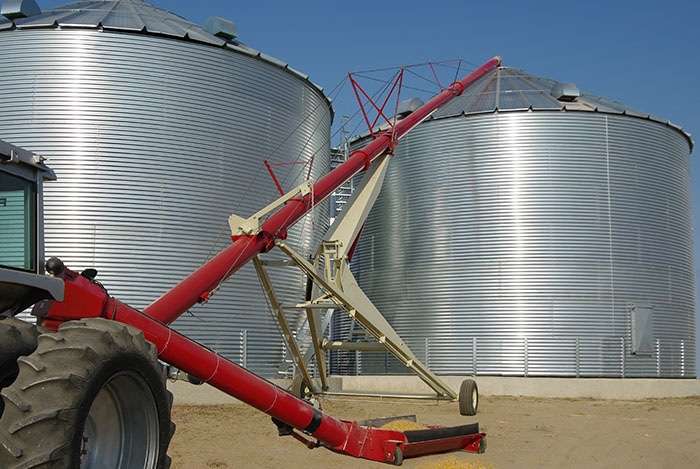
Most farmers are still waiting to price a large percentage of 2021 corn and soybean crops. A bullish corn report will not result in more selling for most.
Many will tell you they sold their 2020 bushels well below the high end of the price range. The reaction is to forward price a lower percentage of crops this year, to avoid last year’s mistakes. I understand the thought process, but not very often do we see marketing success by doing in a current year what you wish you had done the year before. We must rely on a consistent approach that looks forward and not in the rear-view mirror.
In recent years, the U.S. farmer had not sold most of their current growing season bushels as we entered the August crop reports. If the report was bullish, such as it was last Thursday, the grower was happy. If the report was bearish, he/or she was unhappy, and USDA bears too much of the blame. Is this how it’s going to be year after year? Do we want to bet against ourselves being the greatest producers in the world? There will be years weather doesn’t cooperate, but history shows we grow big crops and we do it often.
It is often said big crops get bigger and small crops get smaller after the August report. So, which will it be next month? As a grower my guess is you are banking on a small crop getting smaller. This means limited selling of corn and soybean crops over the next 30 days. The weather in the next three to four weeks will affect final crop size.
What is your plan if prices move lower after the September report? you have a plan if prices increase? To be a true risk manager you must know the answers to these questions.
Store vs. sell
This is also the time of year plans should be finalized as to store the crop versus sell. This is simple math. What is your cost of ownership compared to the opportunity to capture any carries plus basis appreciation? Spreads on corn are tighter than usual while beans are inverted. The spreads will tell you what to do if we listen.
Many comments were made expressing disappointment that prices were not higher after the report, especially on corn. It is okay to think this way, but keep in mind what I have said many times before: Price is complicated and does not always react to the variables you think are important. It is easy to see what you need to see. For example, I hear the comments about the poor Brazilian corn crop, but no one ever mentions how this was more or less offset by larger crops/exports from Argentina, South Africa, and Russia/Ukraine in 21-22.
This is just one example of price bias when you want price to move up as a grower or down as a feeder.
It is normal to have a price bias. However, it’s a problem when it turns into a loss of equity due to price working against you on unmanaged bushels. This happens when you only want to hear news that fits your situation.
There are many variables that impact the prices on the commodities you handle, and some are not always Ag related. For example, just imagine the price chaos if we see shutdowns again due to covid heating back up. Let’s hope this doesn’t happen, but you must calculate the risk in your marketing plan.
One tweet that caught my eye last Thursday after the close said “nothing like being incredibly wrong on the USDA report today”. I assume they were expecting better production numbers and/or higher carryout’s leading to lower prices.
This individual has Risk Consultant for grains for their job description. In my opinion, I don’t believe you can describe yourself as a risk consultant if you use the words “incredibly wrong” regarding price or in this case the outcome from USDA reports. This is not risk management. This is guessing which direction price will move and following this philosophy will lead to problems.
The take home? Don’t let your current price bias influence your marketing plan. Instead let’s focus on ways to defend lower prices on unsold bushels.
I would also plan to defend risk of higher prices to anyone who has bushels sold. This is where most missed out on the 2020 price rally. The often-used cry that call options always expire worthless is without merit. They serve a purpose and must be managed after they are purchased against cash sales.
Once you have control of the 2021 crop from a price perspective, you can now begin planning on 2022 production. You should not allow prices to drop, as expenses to grow a crop have increased substantially.
High expenses and lower prices down the road would be painful and we have seen this happen before following previous high price markets. Things can change and when they do, they happen fast. Let’s prepare now and take advantage of opportunities available today.
Contact Advance Trading at (800) 664-2321 or go to www.advance-trading.com.
Information provided may include opinions of the author and is subject to the following disclosures:
The risk of trading futures and options can be substantial. All information, publications, and material used and distributed by Advance Trading Inc. shall be construed as a solicitation. ATI does not maintain an independent research department as defined in CFTC Regulation 1.71. Information obtained from third-party sources is believed to be reliable, but its accuracy is not guaranteed by Advance Trading Inc. Past performance is not necessarily indicative of future results.
The opinions of the author are not necessarily those of Farm Futures or Farm Progress.
About the Author(s)
You May Also Like






